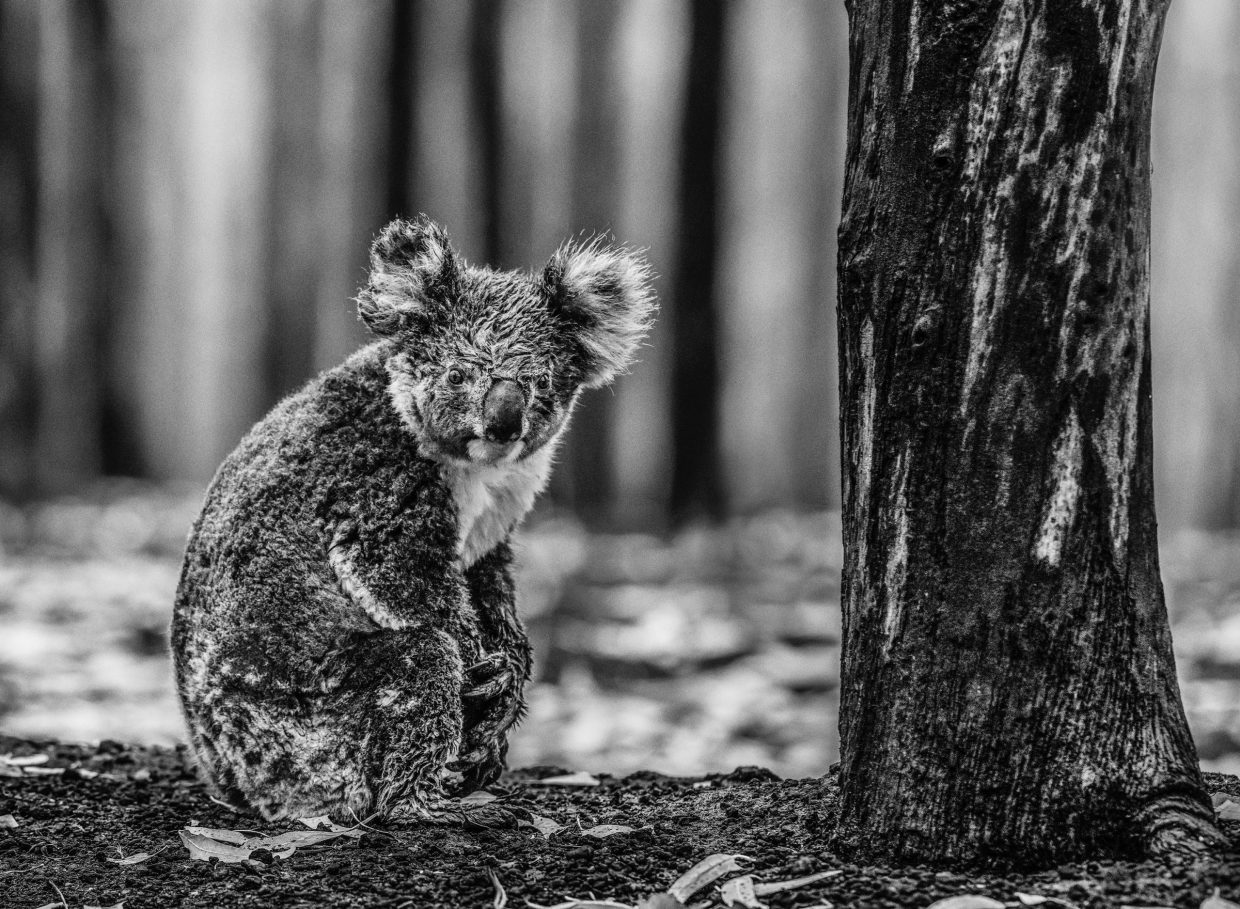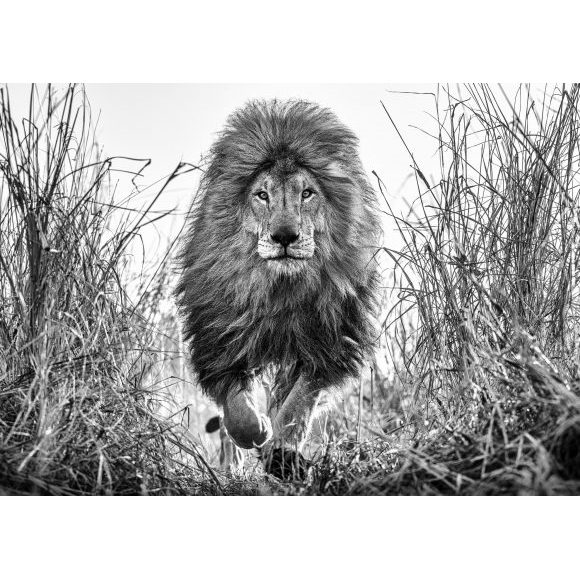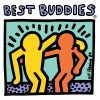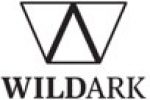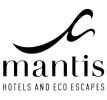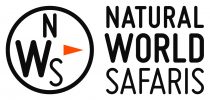Letter From Kangaroo Island, Australia

I have spent enough time in final frontier towns in states such as Montana to hint at some visceral fascination with the great push West. Ostensibly, it makes no sense, I was born in Glasgow, Scotland in the 1960s and my only understanding of the American West came from Westerns on TV.
In Glasgow there is no road west, just the sea and, unlike the Irish, not so many Scots followed Dunfermline’s Carnegie family in making the crossing. Consequently, my family tree had no taste of the American dream - we just stayed put in Britain and now have to listen to a miserable sound deck of Harry and Meghan, Prince Andrew, knife crime, the weather, Brexit and zero economic growth.
So why does the history of places such as Butte, Montana hold a vortex-like grip on me? It’s indicative of the spell cast when I spotted a book that focused on the business heroes of the great move West between the 1820s - 1880s. I felt obliged to buy it and was engrossed immediately.
Stories of men in oil, gold, banking, fur, hotels and catering and of course railroads. Theirs was a cocktail of hard work, hard drinking, tough negotiation, material courage and above all a vision of the future. Some were upstanding figures of morality and others had no ethics at all. It was called the "Wild West" as it was exactly that, I think it’s the whole aspect of travelling and establishing new frontiers that subconsciously fascinated me.
Sometimes the railroads heading to the pacific coast would advance five feet a day, sometimes they would advance five miles. But specific numbers were second to the belief that they were making change - the world in the 1840s was, in their eyes, moving quicker than it ever had. Whatever their creed, whatever their ethics, the barons of the move West believed that they were not just making money, they were making history on a clean sheet of paper.
The participation of the San Francisco 49ers in last week’s Super Bowl prompted a brief personal reminder of the conclusion of the frontier expansion. San Francisco was only founded in 1849, some 436 years after St Andrew’s University, yet look at the wealth of that city and its surrounds now. In 170 years, San Fran has become the heartbeat of the modern world. Apple, Netflix, Google, Facebook, Oracle - I could go on.
Those pioneers of change “out west” were proud men and in the evenings in the saloons when they allowed themselves a moment of quiet reflection, the story goes that they would often joke that there was nothing left to invent.
They can be forgiven, but of course there was - and along came the car, the aeroplane, television, men on the moon and more recently the computer and the internet.
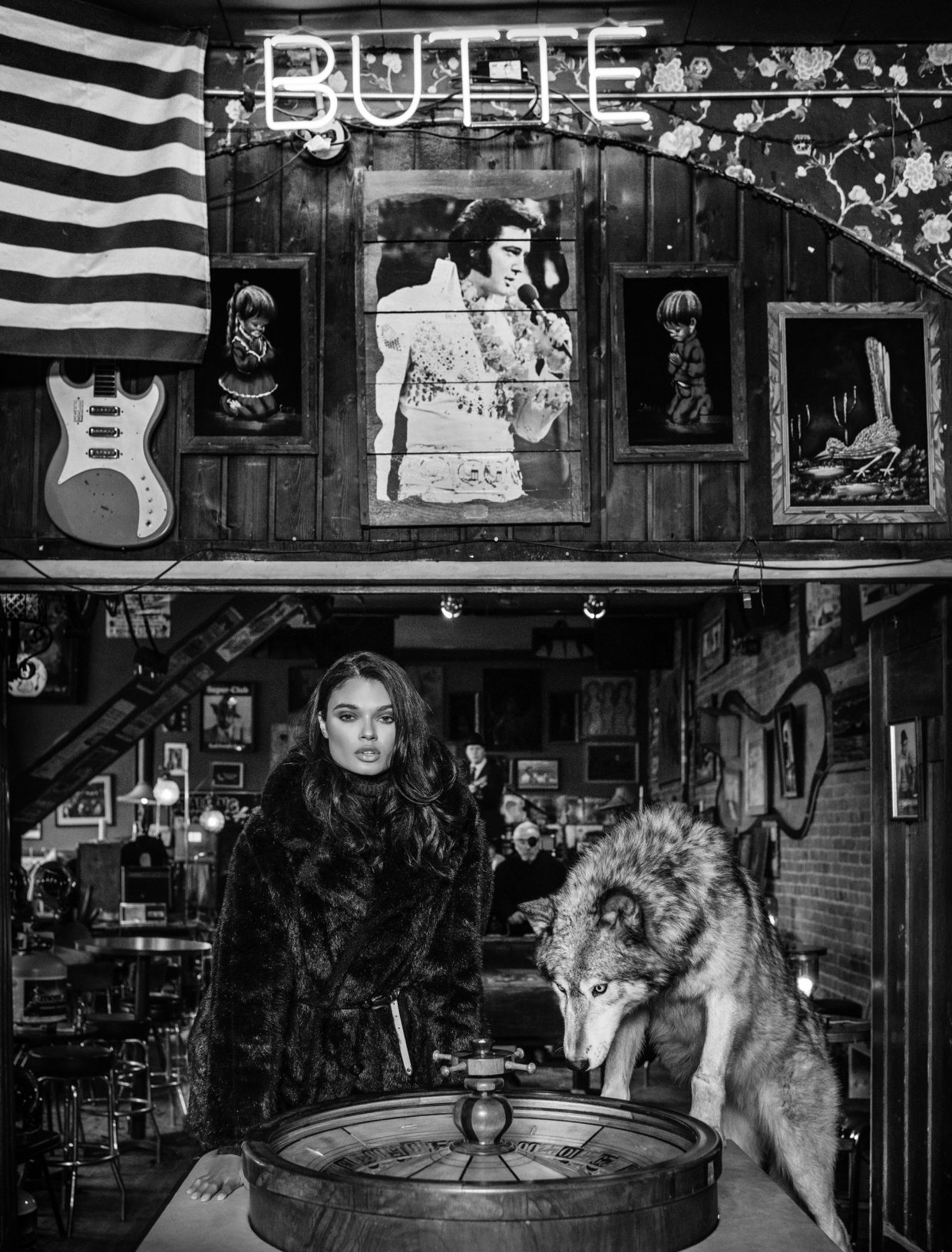
A couple of years ago, I was a proud dad when my daughter Jade was accepted for a summer course at Harvard University in Boston. On her first day, the Principal of the programme offered some perspective on the class’s path ahead. Two thirds of them, she said, would end up in jobs that don't yet exist.
It may be that every generation believes they lived at a time of unprecedented change - certainly those that experienced the World Wars. Nothing can surely compare with that degree of uncertainty, disruption and sacrifice.
The liberalism of the 1960s must also have offered an interesting playground - I imagine that when David Bailey and Jean Shrimpton skipped down the King's Road in the 1960s, they felt empowered by the winds of change.
I recently had to take the nine mile journey from Adelaide airport into the city centre - it is about as unremarkable a journey from an airport to a city as I know. In 1964 when the Beatles toured Australia, they played Adelaide first and 275,000 lined that same road - that was more than 40% of the population of Adelaide at that time. Beatlemania must also have defined an era of material cultural change.
When Ricky Gervais gave the Hollywood elite a rough ride at the Golden Globes in January, some of his brave monologue would have made no sense 20 years ago.
“If ISIS started a streaming service, you would call your agent". This sentence couldn't exist 10 years ago.
The Golden Globes was perhaps the occasion when the word “woke” became mainstream. I would imagine that the newspapers will use it five times as much in the first quarter of 2020 as they did in the last quarter of 2019. It is a word that could perhaps define an era - our era.
We are certainly moving at quite a pace in 2020 and there is a need to keep up. In late January I spent three days in Kenya as a guest of a celebrated British banker. His love of East Africa is matched by his love of family and his love of information. In the party were two other bankers who have earned the right to spread their wings and enjoy a portfolio of interests.
At breakfast every morning, at 7000 feet up on the foothills of Mount Kenya, these three hugely successful men were already armed with every piece of news from around the world in the last 12 hours - in finance, in geopolitics, in sport and even in gossip. I had no iPad and was rather enjoying the view and getting away, but it was instructive to me to see that their focus had not been impaired by being on a “safari”. I concluded that most high achievers are information addicts as they feel a need to constantly monitor change and in 2020, that looks like a fairly exhausting mandate.
So what does success look like for a photographer in 2020?
I don’t think it can be measured by gallery shows or sales prices. We had a strong 2019 - selling more than 850 photographs. At Art Miami, we even sold a picture for $200,000. But whilst these are numbers that help our cashflow, the retention of staff and our ability to reinvest in content, they are relevant only to ourselves.
I believe the “Holy Grail” for photographers is relevance. The ultimate goal is to offer content that is of use to others, not just as art, but also as information. I am fortunate that the field I have come to specialise in is now the epicentre of world focus. Never have sustainability and the diversity and health of wildlife held a greater hold on human consciousness. If my work cannot reach the bar of relevance in this era, I have not succeeded, irrespective of any other datapoint.
If I had continued to be a sports photographer, my career would perhaps not have had the same trajectory and of course if I had focused on female form photography or nudes, my career in 2020 would be as good as over. The New York Times’ recent article on Victoria’s Secret appeared to suggest taking pictures of naked girls with their explicit approval or even actually at their request, constituted unethical or even misogynistic behaviour. I wonder what aspiring Helmut Newtons in Paris, Milan and Berlin thought about that article.
I had said in a recent interview with a photography magazine that I thought female form or erotic photography was potentially in trouble as a genre, but I never expected “the wokes” to stamp on this turf quite so aggressively. There is a huge amount of hypocrisy out there. As Gervais said to Hollywood "you are in no position to lecture the public about anything".
It was in pursuit of this relevance that I decided to go to Australia last month. The images I saw of the horrendous bush fires between Christmas and New Year's Day certainly elicited an emotional response in me, as did the stories of loss of animal life. The bush fires in 2019 in California, Siberia and the Amazon had all made headlines, but this event appeared to be on an altogether different scale. The bush fires in Australia were 10 times the size of those in California and four times those of the Amazon.
I also sensed the access - the cornerstone of any photographic assignment - would be easier in Australia than it would surely have been in Siberia or the Amazon. After all, this manifestly was an event happening in people’s backyards in a country with an English mother tongue.
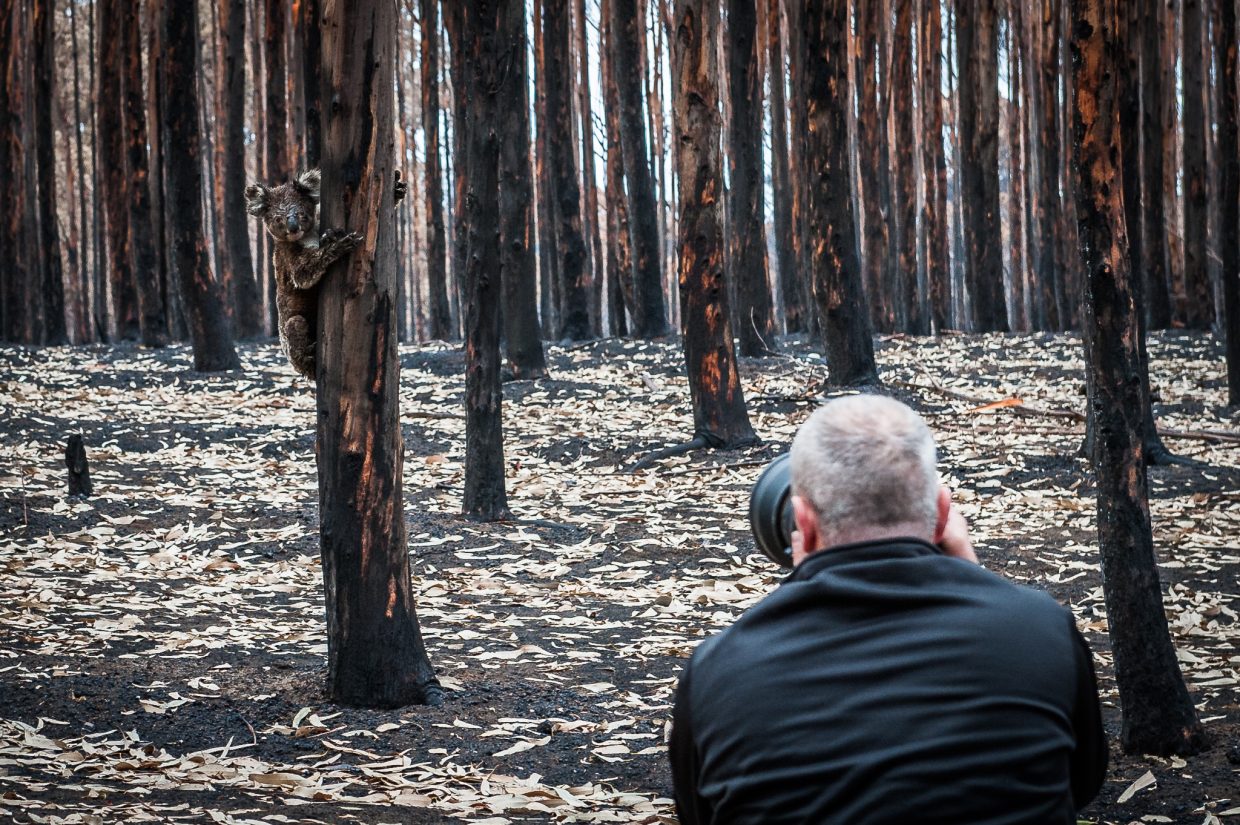
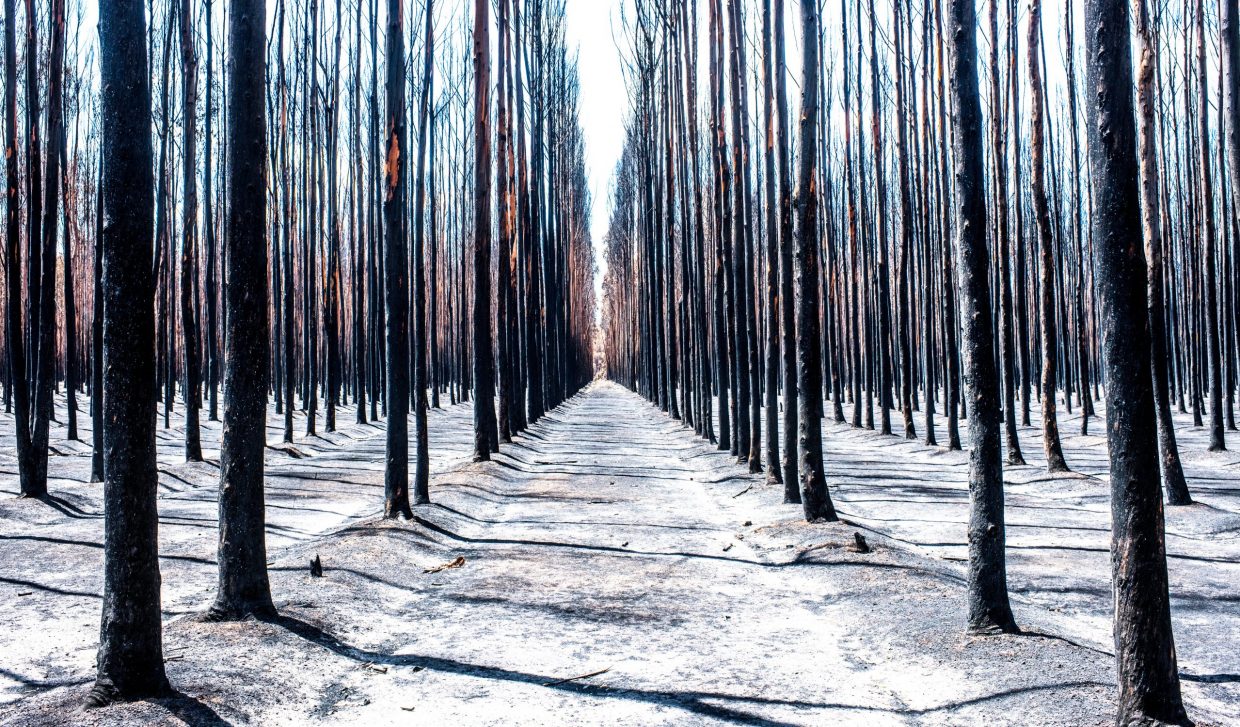
Deciding to travel spontaneously to the other side of the world was no big deal as I had my cameras with me and it is what I do. The only issue was that I made the decision from Yellowstone, Wyoming where the morning temperature was minus -12 degrees Fahrenheit (-25 Celsius) and I was equipped for that but nothing else. The same wardrobe arrived 36 hours later to a baking 100 degrees Fahrenheit. A temperature range of 112 degrees Fahrenheit in 36 hours is a record for me and my suitcase.
On arrival in Australia, I decided to head to Kangaroo Island to the south of Adelaide as my instincts were that exploring the devastation in an area that was naturally confined - like an island - would be better than travelling across vast parts of New South Wales. Our research - and we did a considerable amount - also suggested that the wildlife casualties on the western side of Kangaroo Island were as grim as anywhere in Australia. Apparently, this side of the island looked as if it had been “nuked” and furthermore the fires were still burning.
I had seen historical photographs of this beautiful holiday island - they rather reminded me of Nantucket - albeit it with a heavy concentration of animals as opposed to wealth. The only community of note on Kangaroo Island is Kingscote - an unremarkable village on the east coast that sat a good 20 km from any sign of the fires.
I hired a car from the tiny airport and headed to Kingscote with no real preconception of what would meet me there. I was in for quite a shock - here in the peak of the holiday season there did not appear to be a single holiday maker in a village which had seemingly been taken over by the army - I felt like a last-minute extra in a Zombie movie.
The one hotel had a single room left - all others has been taken over by the army and volunteer firefighters from around the world. The evening was both surreal and uplifting as I listened to Welsh volunteer firemen who had travelled from the Valleys to lend a hand on the other side of the world. They were joined by firefighters from America, New Zealand and many other parts of the UK. The fraternity of global fire fighters is clearly a strong and selfless one.
Photographers and journalists are not the most welcome of visitors to any aftermath arena. Those that are there to help, hold moral sovereignty over those that are there simply to document. So, amidst the army cadets and fire-fighters I kept a low presence and just tried to learn as much information with regard to accessing the west side of the island - which had been totally evacuated.

I had help in Kangaroo island from WildArk - the Australian Conservation NGO for whom I am an Ambassador and Global Wildlife Conservation out of Austin, Texas with whom I had started to build a partnership. GWS, backed by Leonardo DiCaprio, had recently made a very significant commitment of financial support to the relief effort in Australia and I hoped that my association would help.
But it quickly became clear to me that night in the modest hotel bar rammed with exhausted firemen and soldiers that I had a considerable problem - the army had put road blocks running from north to south across the island and the torched west was inaccessible. If I was to get to the west of the island and see what was left of the famously beautiful Flinders Chase National Park, I would have to be resourceful, take a few risks and break some rules.
My contacts introduced me to a part time mid wife whose job gave her vehicle access to parts of the west and that was a start. She was delightful and the first day took me into the fringes of the devastation. I saw a level of carnage and death that was difficult to mentally process, but I knew I had to go further west to be fully exposed to the epicentre of the disaster.
That night I returned to Kingscote and went shopping for some tough walking boots. It was here that I had my break - the owner of the only likely shoe store was a keen photographer and quite bizarrely he recognised me. “I know why you are here” he said. He had followed my intentions on social media. “I guess you want to go behind enemy lines”. I answered in the affirmative and he immediately volunteered to take the day off and help me. It was that simple.
Sean McGowan and I set off at 5 am the next day and with his intimate knowledge of every road, we easily crossed undetected into the west of the island. I sense he enjoyed the challenge of out smarting the army. After all, he was a local and they were passing visitors. It was not without personal danger from falling trees, but I sensed that Sean would move quickly if he heard a cracking noise.
I was met with scenes of destruction the like of which I had never seen before. It was apocalyptical. I probably counted about 500 dead animals for every live one. If the Great war of 1914 - 1918 was played out on the animal kingdom, it was here in Kangaroo Island in January 2020. The floor of the burnt forests was littered with charcoaled sculptures of kangaroos, joeys and koalas. They had been torched and some horrifically retained the shape of their final escape move.
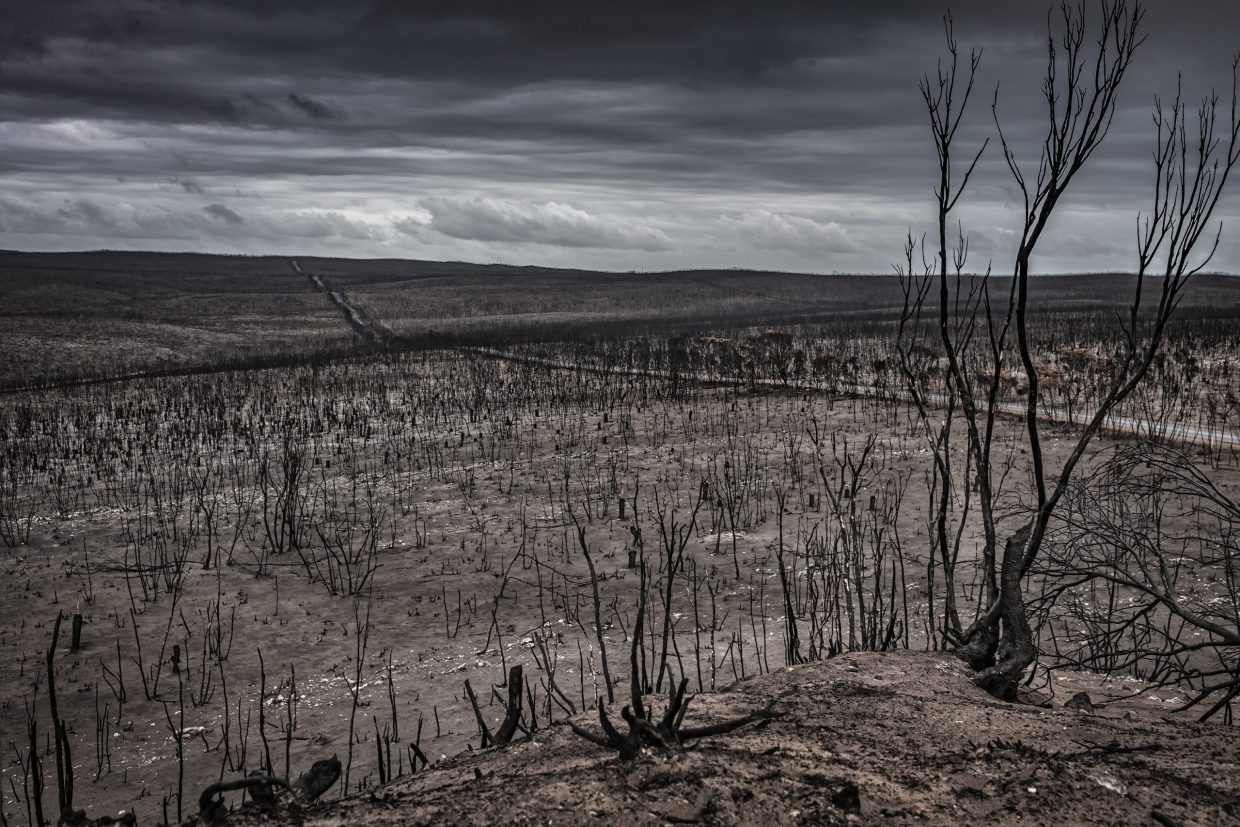
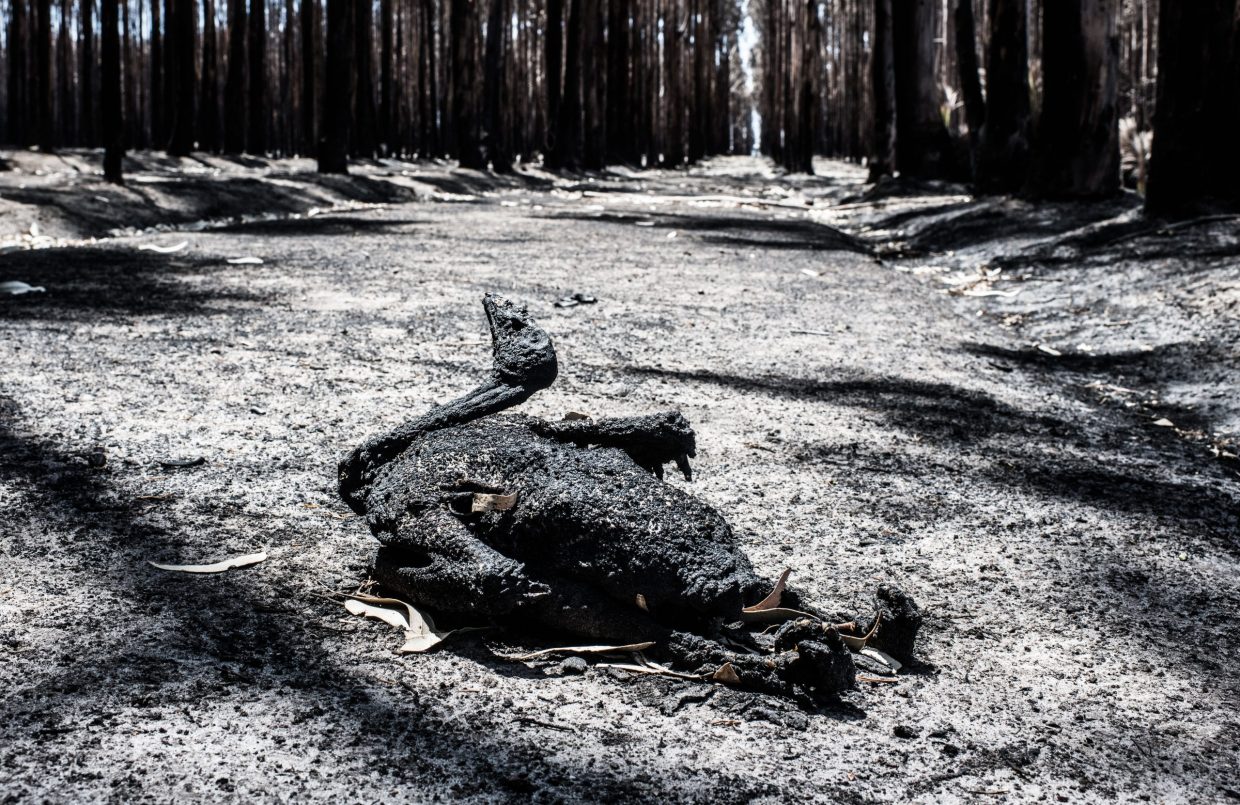
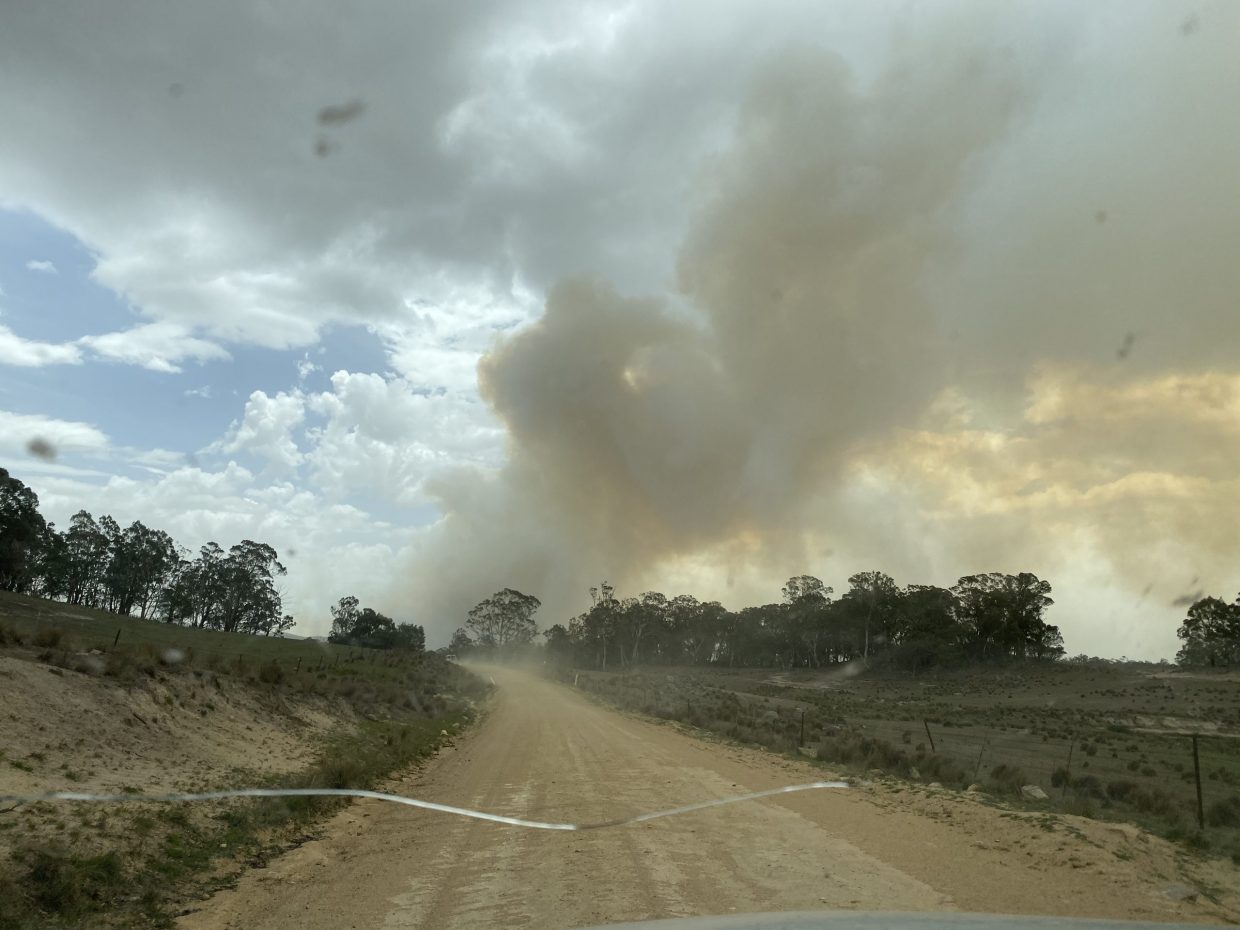
I have never covered a war zone, but this is how I imagined it to be; a canvas of death. Ironically after such a long draught, it was now dark and raining. This - I thought - is what hell looks like.There was an eerie silence not once punctuated by birdsong.
My time on Kangaroo Island was then followed by a shocking day in the Snowy Mountains, New South Wales. It was there that we were forced to evacuate at the very time that the water tanker plane went down nearby with the loss of three lives. Photograph of crash site above. Simultaneously the relentless bush fires claimed the very Two Thumbs Koala Sanctuary we were working with. There was a hideous circularity to that day in Numeralla and it was a tipping point in my consciousness. We needed to do something, and we did. It is absolutely my responsibility to help as much as I possibly can with my work.
Emotive photography can raise awareness, but it must also raise money.
In collaboration with nonprofit Australian organisation WildArk, we launched The #KoalaComeback Campaign to raise $2 million to support recovery efforts in Australia. Fifty percent of the proceeds are being directed to Earth Alliance’s Australia Wildfire Fund, and WildArk will use the remaining donations to support local organizations working on wildlife rehabilitation and habitat restoration.
The campaign was built around the image - 'Survivor' - of one of the few surviving koalas I encountered on Kangaroo Island. Reportage work rarely qualifies as art, but this frame, with its haunting narrative, yet soft touch, gets there. I hope that it will become known and emblematic of a period in time when we all became aware of our planet’s deep fragility and yet there is still a soft poignancy that engages. It offers hope as well as telling of destruction. It could be one of the most relevant photographs of my career.
‘Survivor’, with the help of wave after wave of social media endorsements from a host of global champions, has become firmly associated with the crisis.
Australian actor Chris Hemsworth gave the campaign a great start and he was followed by endorsements from a wall of famous people across the world - Leonardo DiCaprio, Cara Delevingne, Cindy Crawford, Tom Brady, Shane Warne, Harry Kane, Alessandra Ambrosio. As we go to press, The #KoalaComeback Campaign has raised $1.2m. My team in London, led by Alex Ames, did a fantastic job and I think we proved that photographic content can raise material money for good causes if the execution is smart and timely. We hope to build on this initiative in the months ahead.
I should end by commenting on the great people of Australia - who have stood so firm at this time of natural disaster. Their sense of collaboration, volunteer work ethic and selflessness has been humbling to experience.
I had to work quickly at the weekend in Sydney to get some large prints of 'Survivor' made before taking them on planes to the tennis in Melbourne to hopefully win the support of tennis stars and also up to Byron Bay to see the Hemsworths.
I found a good printer, but the only framer I could find that would be up for the job - Newtow Framers. - npfs@pictureframing.com.au, based in the suburb of Newtown, had to adjust their working hours. Their staff worked through the Saturday on the job and when I came to collect and pay at closing time, it was clear that they had done a very professional job - including providing casing for the flights.
I took my credit card out and the boss - Trent Warwick - said “No charge mate - good on ya”. That was quite an emotional moment and is an insight into Australians in a crisis.
